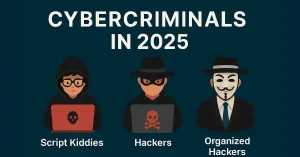If you can point out one thing that the last year taught us, it has to do with Information technology. However, we would appreciate it being a little more flexible than it used to be. Environmentalists and scientists were long speculating on a pandemic. However, no one in their wildest dreams had imagined that a pandemic could be so massive that:
1) It would stay with us for over a year (the article is written in August 2021), and
2) It would retool all the functionalities courtesy of the two crucial requirements to escape the pandemic: social distancing and lockdown.
The damage was more considerable, and the IT staff was put into action. They had to make everything accessible remotely. Consequently, the developments and the projects that were already were halted. This was seen as a good opportunity for the hackers. The same can be proven via the study conducted by Opinion Matters. They found that ninety percent of the cybersecurity leaders and IT experts have affirmed that there has been a burgeoning in the overall cyberattacks and cybersecurity threats. Of them, eighty percent believed that hackers have become more professional, which is seen in the body of attacks.
And almost ninety-four percent of them saw a cybersecurity threats in the last one year. Could we blame COVID-19 for that? Well, most definitely yes! The virus has scathed each one of us in some way or the other. There has been uncertainty surrounding our minds, and fear grips us. Cybercriminals saw this as the golden opportunity, and this resulted in a spike in cyberattacks. This was about the last year. What should we expect in 2021? Well, here we will enlist a few common cybersecurity threats that you must beware of. Let us get started and address cybersecurity threats one by one.
Ransomware attacks
‘Ransomware is one attack that has been around for a while, and it would be no surprise if we see it coming back in 2021. Yes, I am referring to the ransomware attack, and given its mass popularity, IT experts should surely be more careful,’ comments Brian, an IT professional with TopAssignmentExperts.
Back in 2017, Ransomware attacks had massive popularity annexed to them, and not for very good reasons. It was the time when WannaCry was rampantly spreading across the world. But, in 2021, the scare of ransomware is huge. Unfortunately, this has got everything to do with the tech evolution that we have seen over the years. The severity of the problem lies in the fact that this new and improved technology, such as Artificial Intelligence, could mean more sophisticated and devastating attacks. Unfortunately, these attacks are so fool-proof that they can even surpass the high-end tools and even the well-designed software.
Consequently, they can cost you your important business and financial information. The impact can be so massive that even a single entry point could result in data corruption worth millions of dollars. So, how can you escape this? Well, the strategy is simple. At all times, you must have multiple backups for your data to ensure that you are never held hostage to it.
Pandemic related phishing attacks
A phishing attack is another cybersecurity threats when a digital message is sent to people who click on the link present inside the message and fall prey to the attack. There are endless possibilities to justify the reason for phishing attacks. However, depending on the attacker’s objective, sensitive data is compromised, or your system is infected with harmful malware.
‘There is a chance of a surge in phishing attacks in COVID-19. It is because a lot many of us are working from home. This can become a breeding ground for the cybercriminals, who are permanently on a lookout for a loophole,’ points out Jeffery, an associate with EduWorldUSA.
Broadly, in a phishing attack, the cybercriminal will nudge the victim to head to a website that has some fake information about COVID-19. Often, these fake websites will utilize the user’s resources to gain digital currencies like Ethereum, LTC, BTC, etc. Mind you, all of this happens without the user’s consent.
Malware
‘When it comes to cyberattacks, malware is rather a broad term. You can understand it as malicious software created to inflict harm to a computer system. Anytime a cybercriminal induces malware into a victim’s system, it can inflict multiple malware functions, such as deletion or stealing of vital data, data encryption, hijacking the primary functions, and monitoring the activities performed,’ comments Danny, an associate with TFTH.
Broadly malware comprises Trojan horses, viruses, spyware, and worms. As stated by Danny, malware aims to alter, hijack, delete, encrypt, steal data or keep a tab on the user’s activity sans their consent or knowledge. Usually, malware is distributed via USB external drives, physical hard drives, and internet downloads.
Nigerian Prince Scam Well, this happens to be the most widely performed scam of all times, wherein a crook who pretends to belong to the royalty assures to give you several million in exchange for your financial information. Of course, today cyber criminal’s mask as government agencies sending economic stimulus payments, but the character of the scam is the sam
You May Want to Learn About Cybersecurity tools





